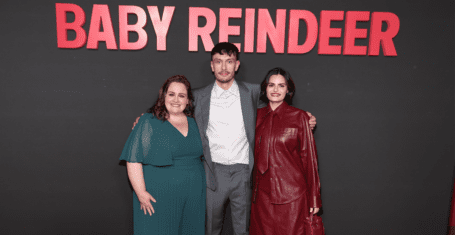
Netflix’s White Hot: So why was Abercrombie & Fitch sued in 2009?
Their court case went all the way to the Supreme Court
Netflix’s latest documentary film, White Hot: The Rise and Fall of Abercrombie & Fitch, looks into the sordid history of the ultimate Y2K brand.
The documentary, which dropped on Netflix earlier today, shows how the company first began and grew to become a billion dollar company selling moose logo T-shirts across the world. The documentary also focuses on the backlash the company would often receive over their lack of diverse staff and the lack of inclusive sizing.
Over the years Abercrombie & Fitch has been hit with multiple lawsuits and the documentary touches on one in particular – the case of Samantha Elauf.

via Netflix
So what actually is the case of Samantha Elauf? And why was Abercrombie & Fitch taken to the Supreme Court over her case? This is everything we know:
Who is Samantha Elauf?

via Instagram @samanthaiman
Samantha Elauf is a fashion blogger in her early 30s from the United States. She grew up in Tulsa, Oklahoma and when she was 17 years old in 2008 she applied for a job at the Abercrombie & Fitch Kids store in the mall near her home.
She thought she would fit into the job well as one of the questions on her application form asked: “What does diversity mean to you?”. She wore jeans, a white top and a black headscarf to her interview. Samantha wears her hijab as part of her religious beliefs but didn’t mention the reason for wearing the hijab in her interview.
At the end of the interview she was told she by the manager they would let her know when to come in for orientation.
Heather Cooke interviewed Samantha and was impressed by her but was concerned about her hijab and mentioned it to the district manager who said Samantha couldn’t work there.
The manager told Heather staff were not allowed to wear “hats” at work and therefore Samantha couldn’t work there. Heather said she presumed the headscarf was for religious reasons, but she didn’t ask about Samantha’s religion because of Equal Employment Opportunity Commission (EEOC) guidelines.
How did her case end up in the Supreme Court?

via Pablo Martinez Monsivais/AP/Shutterstock
After speaking to a family friend about her experience with Abercrombie & Fitch, Samantha contacted the EEOC.
They filed a lawsuit on her behalf against the company. They claimed Abercrombie “refused to hire Ms. Elauf because she wears a hijab, claiming that the wearing of the headgear was prohibited by its Look Policy” and failed to accommodate Samantha’s religious beliefs by making an exception to their “Look Policy”.
The case went to the District Court who ruled in Elauf’s favour and she was awarded $10,000 in damages.
However the decision was then reversed by the Court of Appeals and ruled in Abercrombie’s favour. It was reversed as it was claimed Abercrombie could not be held liable “under Title VII of the Civil Rights Act for failing to accommodate a religious practice until the applicant provides the employer with actual knowledge of his need for an accommodation.”
Samantha Elauf said she wasn’t even aware of the “Look Policy” at the time of her interview and therefore wouldn’t have known to ask for an exception on the grounds of religious beliefs.
The case was then taken to the Supreme Court in 2015. Other religious groups filed court papers in support of Samantha.
The court ruled eight to one in favour of Samantha and said Samantha did not need to have filed an accommodation request in order to be protected under Title VII of the Civil Rights Act.
White Hot: The Rise & Fall of Abercrombie & Fitch is available on Netflix now. For all the latest Netflix news, drops, quizzes and memes like The Holy Church of Netflix on Facebook.
Related stories recommended by this writer:
•Netflix has tell-all doc about the rise and fall of Abercrombie & Fitch coming this month
•Netflix’s next true crime Our Father tells the creepy story of a former fertility doctor
•A British Horror Story: Every single celebrity convicted by Operation Yewtree





















